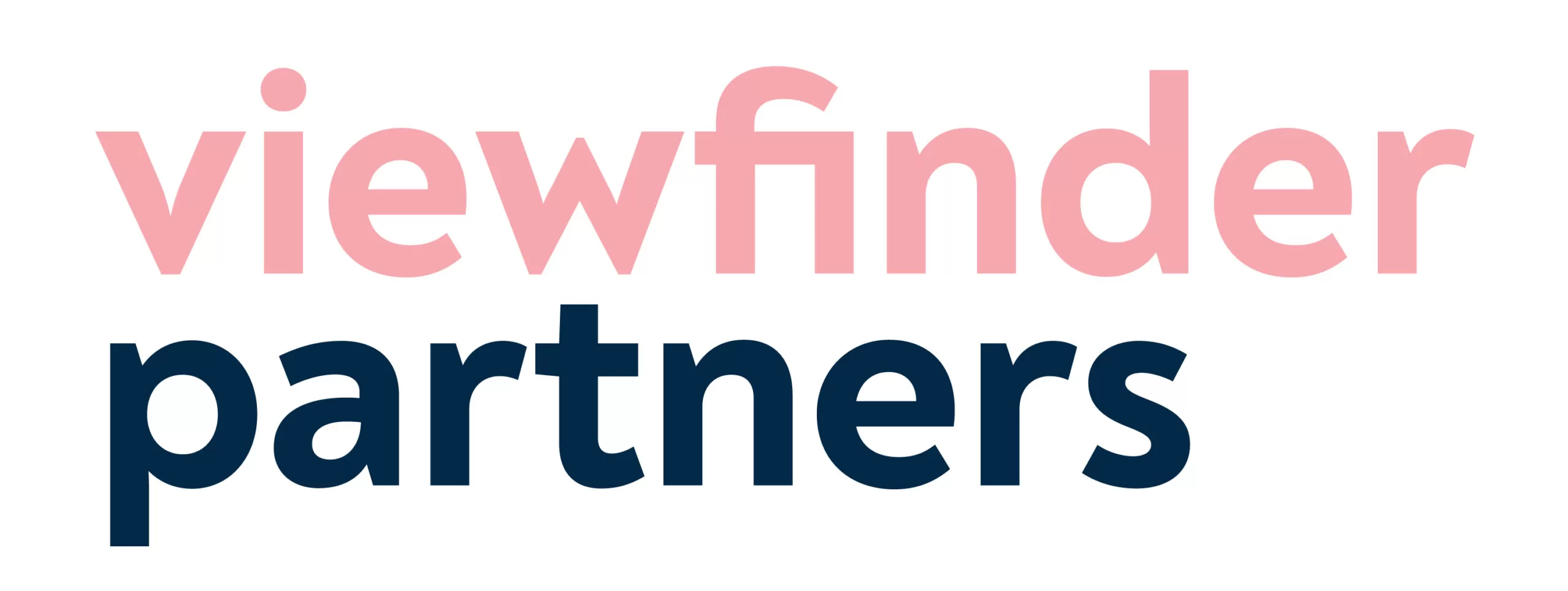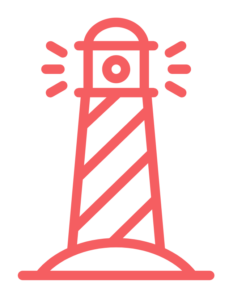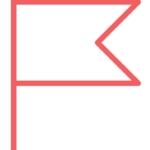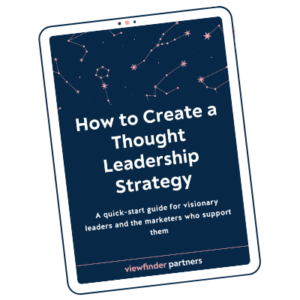What kind of thought leader do you want to be?
When you reach a stage in your career that you’re ready to share your work, the easiest first step is to promote what you’re doing. To share the good news, shiny awards, and proud moments. I think of this first stage as “ads and accolades.” You’re not digging deep to share ideas or reflections. You’re just promoting the end results.
Maybe your LinkedIn posts look like this:

That’s fine, but promoting your wins doesn’t tell people much about how you approach your work, how your process is different than anyone else’s, the mistakes you’ve made, or what you’ve learned.
I teach people to go one step further and share the thought process, perspectives, reflections, and experiences that lead to those end results. The “how” and “why” behind their work.
If you’re ready to move beyond promoting your own accolades and you’re ready to share more ideas, try thinking like one of these three kinds of thought leaders: a beacon, curator, or challenger.
Which kind of thought leader do you want to be?
 The beacon: Working in public + shining as an example
The beacon: Working in public + shining as an example
Who are beacons?
Let’s start with the classic. Beacons are building and thinking in public.
But you don’t have to be an established expert or a veteran in your industry to be a beacon. There are plenty of scrappy beacons who are just starting out and sharing what they learn along the way.
A beacon offers:
- Expertise
- Guidance
- Advice
- Perspective
You’re a beacon if you…generously share what you’re learning
Example of a beacon: Stephanie Nadi-Olson is founder of We Are Rosie, “the world’s first flexible career platform for marketers.” Her reflection on 5 years as CEO is a master class on how to humbly, honestly think in public and share the lessons you’ve learned. My favorite line from her piece: “I am not a fearless leader. I am a leader committed to exercising my courage muscle as much as possible.”
 The curator: Connecting people + resources
The curator: Connecting people + resources
Who are curators?
Curators find the best data, information, resources, and people, and bring them together to create new connections. They’re natural connectors. They always have all the best resources and can connect you to the people you need to know. They create community through their constant connecting.
A curator offers:
- Resources you might not know about
- Connections to interesting people
- A listening ear
You’re a curator if you…find yourself saying “you really need to meet Brittany” or “I just read a study about that.”
Example of a curator: Whitney Johnson is CEO of Disruption Advisors, a talent development firm that focuses on “smart growth.” Whitney’s podcast, “Disrupt Yourself,” features guests who have navigated seasons of major change and growth. I always get the sense that Whitney chooses people who she’s genuinely interested in, and her conversations reflect that curiosity. As host of the show, she’s sharing her guests’ stories (and her curiosity about them) with her audience. A lot of interview podcasts are really curation — connecting your audience with people you know and their ideas.
 The challenger: Offering a new perspective + starting conversations
The challenger: Offering a new perspective + starting conversations
Who are challengers?
Challengers question norms, push back on the status quo, and give us a new way to think about old ideas.
A challenger offers:
- A new viewpoint
- New definitions and frameworks
- Updated metrics for success
You’re a challenger if you…ask “why?” a lot. Want to create something new. See a new path forward.
Example of a challenger: Dr. Dee Kimbrel is a truth-teller who shares real talk about corporate DEI. Clear signs on her LinkedIn that she identifies as a challenger: “unapologetic,” “I don’t know who needs to hear this but…”, and the repeated push for leaders to think more critically and intentionally about their DEI efforts.
If you’re ready to share more than your own happy results, try thinking like a beacon, a curator, or a challenger to share more about the how and the why behind your work.


 The beacon: Working in public + shining as an example
The beacon: Working in public + shining as an example The curator: Connecting people + resources
The curator: Connecting people + resources The challenger: Offering a new perspective + starting conversations
The challenger: Offering a new perspective + starting conversations



